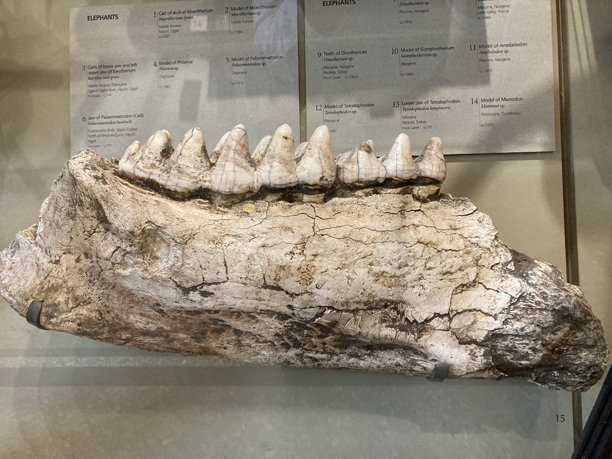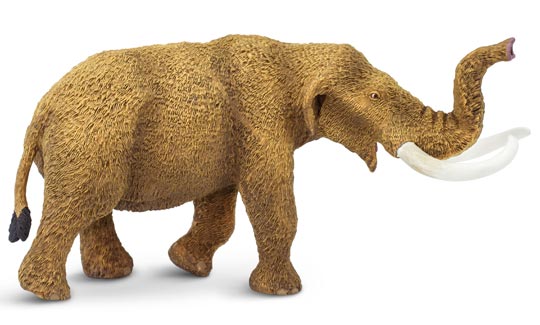A Beautiful American Mastodon Jaw Fossil
Prehistoric elephants have always fascinated the public. Whilst we can marvel at the extant elephants alive today, they are just the remnants from what was a much more diverse Order. When visiting the Manchester Museum, team members photographed an American mastodon jaw fossil that was on display. The exhibit highlighted the evolutionary origins of the Proboscidea.
Picture credit: Everything Dinosaur
The American Mastodon
The American mastodon (Mammut americanum) may have resembled a Woolly Mammoth. It had a long, shaggy coat and curved tusks. However, the American mastodon was only very distantly related to the coeval Woolly Mammoth (Mammuthus primigenius). It ranged from Canada to Central America (Pliocene to Pleistocene). Isolated populations may have become extinct as recently as five thousand years ago.
The image (above) shows a model of an American mastodon in the Wild Safari Prehistoric World model range.
To view this collection: Wild Safari Prehistoric World Models and Figures.
The Manchester Museum fossil gallery contains an amazing collection of fossil specimens. The Cenozoic mammals section highlights the evolution of horses, the ascent of our own species and the evolution of key mammal groups today such as the elephants, the Carnivora and the rhinos.
It is well worth a visit and free to enter. However, a donation is recommended and can be made at the entrance to the main galleries. Ironically, the donation boxes are located close to the skeleton of an elephant species that is still around today – an Asian elephant Elephas maximus.
Visit the Everything Dinosaur website: Everything Dinosaur.



